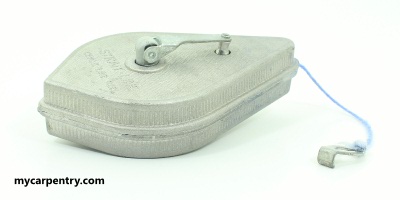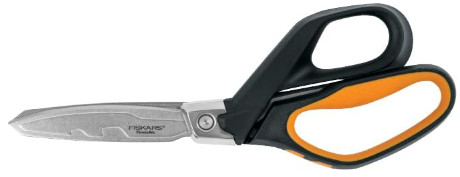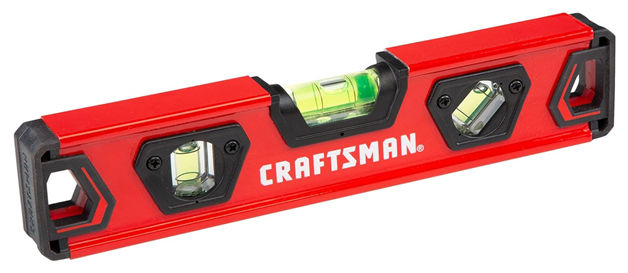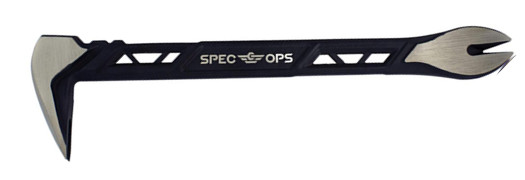Carpentry Hand Tools
Carpentry hand tools are essential for building most carpentry projects. As a carpenter's helper, they may be the only tools you will need. As you browse the hand tool section at your local hardware store, you will find many brands to choose from.
Some hand tools are designed for specific purposes and are too infrequently used to justify toting them around in your daily nail bag.
The list of essential carpentry hand tools that you will find in my tool belt on any typical workday are the following:
- Chalk line - for marking long straight lines on wood and concrete slabs
- Carpenter's pencil - a thick-leaded, durable pencil for marking on wood and other materials
- Utility knife - used for sharpening your carpenter's pencil and general cutting
- Tin snips - for cutting metal flashing and banding material
- Wood chisel - for chiseling wood or to use as a pry bar
- Torpedo level - for quickly leveling short spans
- Nail puller - for pulling nails from wood framing (every carpenter makes mistakes)
- Speed square - for marking roof pitch and angles
- Tape measure - a 25 to 30-foot tape measure fits well in a nail bag
- Hammers - I regularly use a trim hammer and a framing hammer, but not at the same time
The Essential Carpentry Hand Tools
Chalk line: I use my chalk line to lay out a concrete slab or wooden subfloor for partition walls or floor tile. You can also use a chalk line on rafters for marking the starting point for roof decking, or on floor joists for marking the starting point for plywood subfloor, or for marking straight lines on plywood, or for marking straight lines on just about anything too long for a straight-edge tool.
Red and blue are typical chalk colors. Many carpenters prefer red because it is easier to see and doesn't seem to wash off easily. I like blue chalk because it blends with the color of my jeans after a spill.
Carpenter's pencil: A carpenter's pencil has a durable graphite lead for marking on wood or other rough material without easily breaking the tip. You can sharpen your carpenter's pencil with a utility knife or use a special sharpener for carpentry pencils. I like the latter because it puts a consistent point at the end. If you typically use a utility knife to sharpen your pencils, you must be careful not to break the lead point when sculpting the tip.
Utility knife: A utility knife, razor knife, or box cutter is the perfect tool for removing packaging from materials delivered to a job site. I own two flavors of utility knives: the retractable blade type with a compartment that holds replacement blades and the folding style that fits easily in your pocket.
I use the retractable blade style in my tool bag because it fits easily in one of the narrow pockets. I use my folding-style utility knife when I may need my knife, but I'm not wearing my tool belt.
Tin snips: I use tin snips to cut and shape metal flashing. They are also handy for cutting the metal bands that typically bind lumber packages together for delivery.
Wood chisel: I use a wood chisel to clean up circular saw cuts on stringers. As a builder of over 200 decks, I can say that a wood chisel is extremely useful as a wedge for prying deck boards into place before fastening them to the framing.
If all boards were perfectly straight, we would never need to do this, but wood is rarely perfect. Deck boards come in all shapes: bowed, cupped, and crooked. For these boards, the wide chisel is the tool of choice.
Torpedo level: Use a torpedo level for leveling small openings where a 2-foot level won't fit. I keep a torpedo level in my toolbox for leveling my travel trailer at campgrounds. Two-foot or four-foot levels are the best when leveling floor joists or plumbing walls.
Nail puller: A nail-puller is a must-have tool for residential framing. Sometimes, carpenters make mistakes (we all know it is rare :-) and must remove a stud or joist. There are many reasons why you might need to pull nails. When you do, a nail-puller is the right tool.
Speed square: A Speed Square is a must-have tool in your tool belt. They are super-handy for marking 90° angles on framing lumber and roof pitch angles on common or jack rafters. Learn more about carpentry squares.
Tape measure: A 25-foot Stanley tape measure is typical in construction. I purchased a 30-footer because I wanted one for years. But I rarely needed the extra five feet since dimensional lumber doesn't typically come in lengths greater than 24 feet. Learn more about tape measures.
Hammers: I own two types of hammers for driving nails: a 20-ounce smooth-face hammer for wood trim and a 22-ounce waffle-faced hammer for residential framing. Learn more about hammers.
**As an Amazon Associate, mycarpentry.com earns revenue from qualified purchases.
What next?
Leave Carpentry Hand Tools and return to the Carpentry Tools page.
Leave Carpentry Hand Tools and visit our home page.









